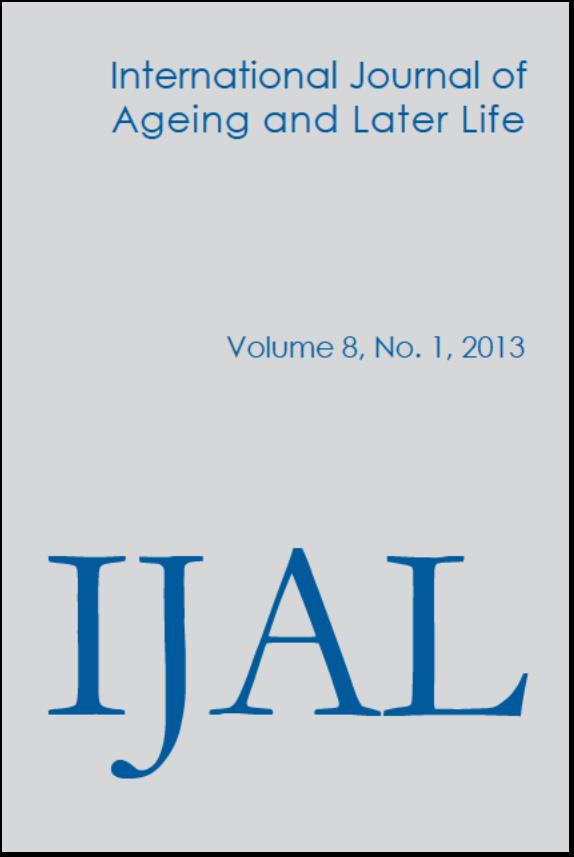The magic of cinema: time as becoming in Strangers in Good Company
Main Article Content
Abstract
This article examines the ability of cinema to alter our perception and experience of time and ageing by analysing the film, Strangers in Good Company, as an example of what Gilles Deleuze called a time-image film in his philosophy of cinema. By looking at the cinematic representation of time as culturally contingent and open to change, and the boundary between representation and reality as thin, Deleuze’s theorisation of time-image cinema presents us with a way of understanding time as a kind of magic that can free us to live and become rather than as a succession of equally metered, linear moments. The experience of the older women who ’’act’’ in this movie confirms Deleuze’s thinking, when their brief filmic reprieve from the exigencies of chronological and linear time spills over into their ’’real’’ lives, allowing them to move beyond static representations of old age that tie them to deteriorating bodies and negative identities into an open future of becoming.
Metrics
Article Details

This work is licensed under a Creative Commons Attribution-NonCommercial 3.0 Unported License.
Since 2020 the International Journal of Ageing and Later Life uses a Creative Commons: Attribution license, which allows users to distribute the work and to reform or build upon it without the author's permission. Full reference to the author must be given.
References
Al-Khalili, J. (2004). Quantum: A Guide for the Perplexed. London: Widenfield and Nicolson.
Barad, K. A. (2007). Meeting the Universe Halfway. Durham: Duke University Press.
Brennan, T. (1999). Social physics: Inertia, energy, and aging. In K. Woodward (ed.), Figuring Age (pp. 131–148). Indianapolis: Indiana University Press.
Cole, T. R. (1992). The Journey of Life: A Cultural History of Aging in America. New York: Cambridge University Press.
Colman, F. (2011). Deleuze and Cinema: The Film Concepts. New York: Berg.
Deleuze, G. (1986). Cinema I: The Movement-Image. H. Tomlinson & B. Habberjam (trans.). Minneapolis: University of Minnesota Press.
Deleuze, G. (1989). Cinema 2: The Time-Image. H. Tomlinson & R. Galeta (trans.). Minneapolis: University of Minnesota Press.
Graham, J. E. (2010). ‘‘Them’’ are ‘‘Us’’: Building appropriate policies from fieldwork to practice. In J. E. Graham & P. H. Stephenson (eds.), Contesting Aging and Loss (pp. 171–190). Toronto: University of Toronto Press.
Grosz, E. (2005). Time Travels: Feminism, Nature, Power. Durham: Duke University Press.
Grosz, E. (2011). Becoming Undone: Darwinian Reflections on Life, Politics, and Art. Durham: Duke University Press.
Harro-Loit, H. & Koresaar, E. (2010). Revising Time in Cultural Research. Trames 14(64/59): 303–306.
Kirby, V. (2011). Quantum Anthropologies: Life at Large. Durham: Duke University Press.
Meigs, M. (1991). In the Company of Strangers. Vancouver: Talonbooks.
Noe, A. (2009). Out of Our Heads: Why You Are not Your Brain, and Other Lessons from the Biology of Consciousness. New York: Hill and Wang.
Pisters, P. (2003). The Matrix of Visual Culture. Stanford: Stanford University Press.
Rodowick, D. N. (1997). Gilles Deleuze’s Time Machine. Durham: Duke University Press.
Rodowick, D. N. (2010a). Introduction: What does time express? In D. N. Rodowick (ed.), Afterimages of Gilles Deleuze’s Film Philosophy (pp. xiii–xxiv). Minneapolis: University of Minnesota Press.
Rodowick, D. N. (2010b). The world, time. In D. N. Rodowick (ed.), Afterimages of Gilles Deleuze’s Film Philosophy (pp. 97–114). Minneapolis: University of Minnesota Press.
Smethurst, P. (2000). The Postmodern Chronotype: Reading Space and Time in Contemporary Fiction. Atlanta: Rodopi.
Young, I. M. (1990). Justice and the Politics of Difference. Princeton: Princeton University Press.





